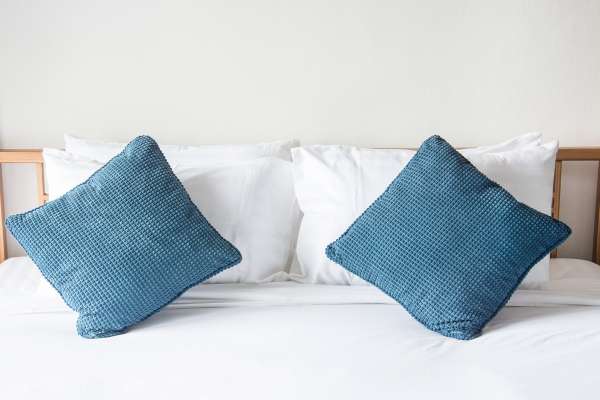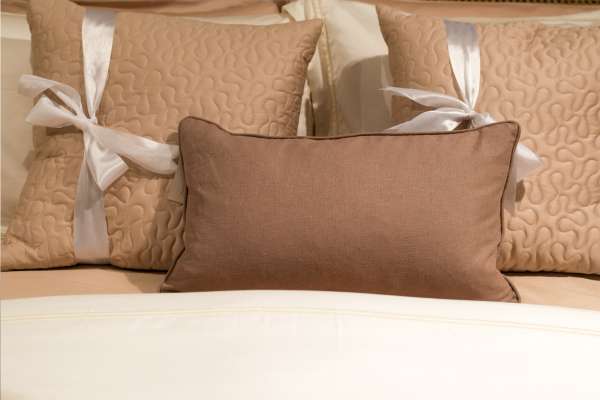Welcome to the definitive guide on “How to Mix and Match Throw Pillows,” Where we delve into the intricacies of creating visually captivating and harmonious arrangements. Whether you’re an aspiring decorator seeking to elevate your home decor or a seasoned designer aiming to refine your skills, this comprehensive exploration will equip you with the knowledge and insights needed to master the delicate balance of throw pillow composition.
Understanding Color Theory

Understanding color theory is essential in various fields, from design to visual arts, as it serves as a foundational framework for creating visually appealing compositions. The basics of the color wheel form the cornerstone, delineating primary, secondary, and tertiary colors, providing a comprehensive understanding of color relationships.
Complementary colors, positioned opposite each other on the wheel, create dynamic contrasts and enhance visual impact when used together. Analogous colors, found adjacent to each other, foster harmonious and cohesive designs. Monochromatic schemes, derived from a single base hue with varying shades and tones, offer a sophisticated and unified aesthetic.
Mastery of these principles empowers creators to manipulate color intentionally, resulting in compelling and well-balanced visual experiences across diverse mediums.
Textures and Fabrics

Textures play a pivotal role in design, adding depth, tactile appeal, and visual interest to spaces and objects. Understanding the importance of textures involves recognizing their ability to evoke emotions, create contrast, and enhance overall aesthetic quality. When it comes to fabrics, combining diverse textures can elevate a design, creating a rich and dynamic visual experience.
Consider juxtaposing smooth and rough textures, or mixing fabrics with varying patterns, to add layers and intrigue. Striking a balance is key, ensuring cohesion while introducing an element of surprise. Whether in interior design or fashion, the thoughtful integration of textures and fabrics contributes to a nuanced and sophisticated design language, capturing attention and fostering a sensory connection with the audience.
Size and Shape Variation

Size and shape variation are pivotal elements in design, offering a nuanced approach to creating visual interest and balance. Contrast is crucial for focal points and hierarchy, guiding the viewer’s attention. In the realm of soft furnishings, balancing square and rectangular pillows contributes to a harmonious arrangement, while incorporating bolsters and round pillows introduces diversity and breaks monotony.
Thoughtful consideration of size and shape variations not only enhances aesthetic appeal but also ensures a well-calibrated and inviting design that resonates with both precision and creativity.
Selecting a Dominant Color

Selecting a dominant color is a pivotal decision in design, shaping the visual identity of a space. Start by choosing the main color scheme that aligns with the desired mood and theme. Consider the room’s overall palette to ensure cohesion and flow.
Identify dominant colors in furniture and decor, allowing them to guide the primary hue. This thoughtful approach ensures a unified and aesthetically pleasing design that resonates with both intention and sophistication.
Adding Contrast with Patterns

Introducing contrast through patterns is an artful way to elevate design aesthetics. Pattern mixing, when done thoughtfully, infuses dynamism and visual intrigue into a space. Choose patterns of varying sizes to create a harmonious blend, avoiding visual overwhelm.
Balancing bold and subtle patterns ensures a nuanced interplay, allowing certain elements to command attention while maintaining an overall sense of cohesion. This strategic use of patterns adds depth and personality, transforming any design into a sophisticated and visually engaging masterpiece.
Texture and Material Considerations

Texture and material considerations are integral to crafting a compelling and tactile design. Explore a variety of textures, from smooth to rough, to add depth and sensory richness to the space. Mixing different fabric types creates a dynamic interplay, Enhancing visual interest and providing a multifaceted experience.
Additionally, incorporating embellishments such as embroidery or appliqué can elevate the overall aesthetic, infusing the design with a personalized touch and a sense of sophistication. Thoughtful attention to texture and material choices ensures a well-rounded and visually captivating design that resonates with both style and substance.
DIY Pillow Covers

Crafting DIY pillow covers offers a creative outlet, allowing individuals to infuse their personal style into home decor. Explore imaginative ideas, from hand-painted designs to unique fabric combinations. The satisfaction of a personalized touch goes beyond aesthetics, fostering a sense of accomplishment and a connection to the living space. DIY pillow covers not only serve as functional decor but also showcase individuality, transforming a simple project into a statement of creativity and personal expression.
Budget-Friendly Options
Discovering budget-friendly throw pillows doesn’t necessitate compromising on style. Explore thrift stores for hidden gems, where unique finds can be repurposed or updated with DIY touches. Engaging in do-it-yourself projects allows for creative expression while staying within budget constraints. With a keen eye and a touch of creativity, one can cultivate an affordable and stylish collection of throw pillows that reflect personal taste without breaking the bank.
Maintenance and Cleaning
Maintaining the pristine condition of throw pillows is essential for prolonged enjoyment. Regularly vacuuming or gently beating pillows helps prevent dust accumulation. For cleaning, consider material-specific hacks, such as spot-cleaning delicate fabrics or using a damp cloth for sturdy ones.
Removable covers facilitate easy washing, ensuring a fresh and vibrant appearance. By adhering to these tips, one can extend the longevity of throw pillows, preserving their aesthetic appeal and contributing to a well-kept and inviting living space.
Personalizing Your Space
Personalizing your space is a design journey that goes beyond aesthetics, delving into the realm of self-expression. Throw pillows serve as a versatile canvas for infusing your personality into decor. Whether through color, pattern, or custom designs, these accents convey a unique narrative, transforming a space into a reflection of individual style and preferences.
By strategically incorporating throw pillows, one can curate an environment that not only looks appealing but resonates with a sense of identity, making the home a truly personalized sanctuary.
Practical Arrangement Tips
Practical arrangement of throw pillows involves mastering layering techniques, creating depth and visual interest. Utilizing odd numbers ensures a harmonious balance, while experimenting with various arrangement styles adds versatility.
By layering textures, playing with sizes, and incorporating odd-numbered groupings, one can achieve a balanced and aesthetically pleasing display that elevates the overall design of a space. These tips empower individuals to arrange throw pillows thoughtfully, transforming them into dynamic elements that contribute to a well-curated and inviting environment.
Trends in Throw Pillow Styling
Staying on-trend with throw pillow styling involves embracing current patterns, colors, and arrangements. Explore popular motifs such as botanical prints or geometric patterns, and experiment with trending color palettes. To stay updated without breaking the bank, consider affordable options like removable covers or DIY projects. By incorporating contemporary elements while being mindful of budget-friendly choices, individuals can effortlessly infuse their spaces with a fresh and fashionable vibe through throw pillow styling.
How many throw pillows should I use on a sofa or bed?
The number of throw pillows depends on the size of your furniture and personal preference. A standard sofa typically looks best with 2-3 pillows, while a larger sofa may accommodate 4-5. For a bed, 2-6 pillows can work depending on its size and desired aesthetic.
Conclusion
Mastering the art of throw pillow styling involves understanding color theory, texture considerations, and arrangement techniques. From choosing a dominant color to experimenting with patterns and exploring budget-friendly options, each decision contributes to a well-curated space. Embrace the satisfaction of DIY projects and the thrill of personalization to infuse your personality into decor.
Trends may guide, but your unique style defines. As you embark on this creative journey, remember there are no rigid rules—only opportunities to experiment, express, and create a living space that resonates authentically with you. So, explore, innovate, and let your home become the canvas for your individuality and style.
